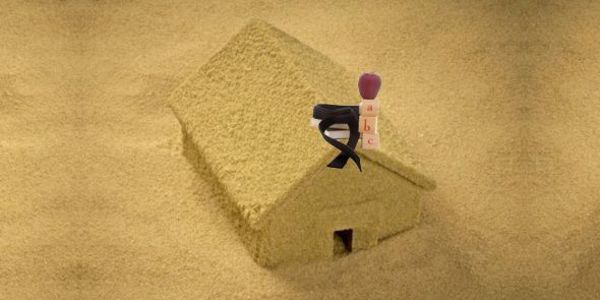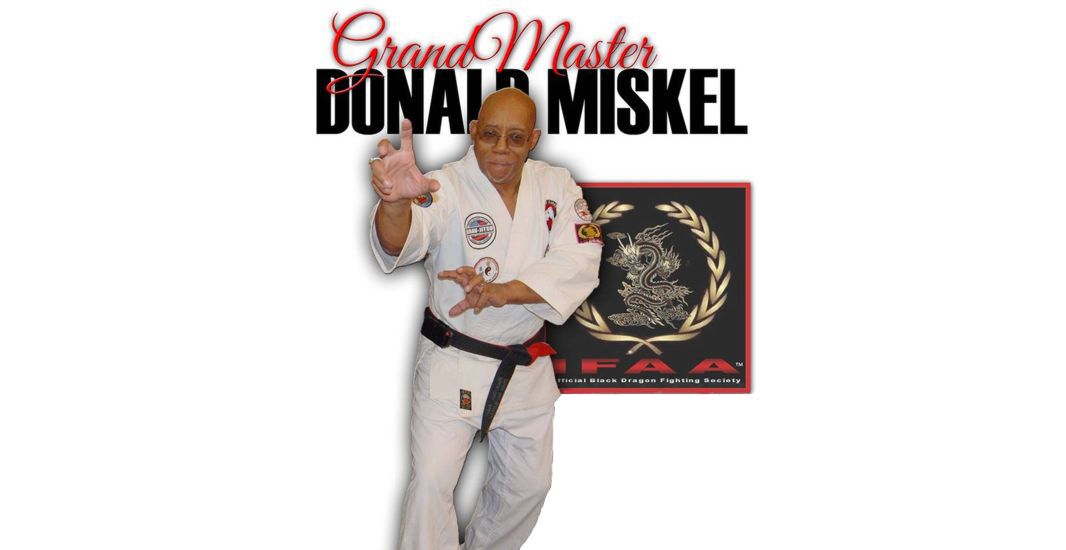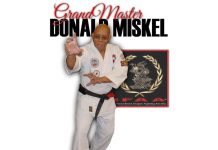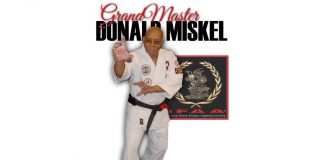Yeah, I know. I can almost hear you complaining, “Sand fu, here he goes again with those ridiculous titles”. If you’ll be kind enough to bear with me for a few minutes I hope to get this to make sense. I’ll try anyway.
As many of you know by now, I look back on my martial arts with years of introspection. That is to say that I’m up in age and I put more time into philosophical rumination than into physical training. Sitting from this high perch of age and experience, I’ve seen several trends in the martial arts that need to be addressed.
What I would like to address in this brief essay is martial arts without foundation. For this treatise I’ll call it sand fu. During his ministry Jesus often taught in parables. These were simple stories designed to illustrate and clarify what ever point he was preaching on. They were stories that were framed in contexts that they would understand. One of these parables addressed building on a weak foundation. He likened this to a man who builds his house on sand as opposed to one who built his house upon a rock.
While living in Chicago, I lived in a housing complex that was built on reclaimed land. The area was by the Little Calumet River and had at one time been swampland. Over a period of time this wet area was reclaimed with land fill and eventually several housing complexes were built on it. Most of the buildings fared well but several closer to the river had to be destroyed. The reason for that was the nature of the soil it was built upon. To an untrained eye the soil looked firm but the houses were built on poor foundational material. One building actually began to sink and another formed cracks in its support structure. Because of this several of these beautiful structures had to be torn down.
If you build on sand or if you build without a strong foundation your building will fall down around your ears.
In these days of rapid acquisition and instant gratification many buildings are built without the proper foundation and on sinking sand. It doesn’t matter about the quality of your building material or the skill of your labor. If you build on sand or if you build without a strong foundation your building will fall down around your ears.
You may wonder where I’m going with this and what does it have to do with the martial arts. A trend that I’m seeing these days is new systems being created by young martial artists with little skill or background. In other words, systems are being built with no real foundation.
Every martial art started with someone. Someone had an idea or a moment of inspiration and built on it. That’s the argument I hear from some of the brown belts and shodans who feel that they have enough experience and insight to create a new martial art. I won’t argue the point that they make but putting together a couple of blocks, punches and kicks and maybe a takedown or two does not a martial art make.
In the original systems that I trained in it took from six to eight years to achieve the rank of shodan. That is if a person had the ability to ever reach that coveted rank. In those days staying in the arts for years didn’t guarantee a black belt. Some students reached brown belt and never advanced further regardless of how long they studied. We entered the training knowing that most of us wouldn’t be able to earn a black belt.
Actually rank is too much of an issue with many practitioners. More attention is paid to trying to reach that symbol of martial perfection than in the quality of training. In other words focusing too hard on the rank that they want to acquire prevents them from attaining that very rank. It’s like trying to pluck a piece of lint from your bath water. The more you try to pluck it from the water, the more it evades your efforts. Advancement into the more advanced rank isn’t accomplished by perfecting the art that you’re training in. It is achieved by perfecting each individual technique and aspect of that art. There’s an old joke that asks, ‘how do you eat an elephant’? The answer is, ‘one bite at a time’. There are too many practitioners who are trying to swallow the elephant whole. Advancement in any martial art is in small increments, not in quantum leaps. It takes time.
The founders of these various styles that we study today were generally trained in some other art or several martial arts. It is from those wells of knowledge that the systems that they founded came to be. In truth, no one person creates a martial arts system. Their creations are the culmination of the efforts of many teachers who gave them the foundation to build their art upon. In many schools black belts are handed out in a year or less. If a person has no pervious training, these systems can not be mastered in a year. It takes longer than that to just learn the basics. Attaining a Shodan doesn’t make one a martial arts master. It merely means that he has mastered the basics. It’s at that point that he begins to truly learn his particular martial art.
I’ve been studying the martial arts for over fifty years and I am still a student. I am still learning. That’s why I don’t usually use the title ‘master’ or grandmaster’, though I have certification that recognizes me as such. Within the confines of my organization, the BLMAA there are individuals that I look up to as teachers and masters. I hold the position that I hold in the BLMAA, not because of unequaled knowledge or superior ability, but because I had a vision that I’ve tried to build on. There are several members that I would be glad to address as master and whom I learn from.
With a number of other instructors and masters, I cofounded the BLMAA and I’m the creator of one of its fighting systems. That doesn’t mean that I came up with techniques that had never been seen before. The system that I helped create isn’t a set of new techniques but is based on years of studying, training and teaching in several established (classical) systems. It is only my approach that is different. In my personal martial arts journey I created a few techniques that I thought were completely unique, only to learn later that I had reinvented the wheel. I have discovered that there are only so many ways to use the body effectively in combat. Believe me, all of those ways have been discovered. No one has a monopoly on the truth.
New systems arise out of old systems. Out of Tode and Okinawa Te we got Karate. Out of Kung Fu we got Chaun Fa which evolved into Kempo and eventually into American Kenpo. From Jiu Jitsu we got Judo. From Daita Ryu Aikijitsu we got Aikido. From Taekyon and Japanese karate we got Taekwondo. All of these arts weren’t new arts but compilations and reinterpretations of pre existing arts. From this we will understand that no one of the founders of these arts were their sole creators. They were simply responsible for taking the knowledge that had been handed down to them and reformatting it to meet the more modern needs. By the time that they created these arts they had many years of practice and experience under their belts. Many were already masters in those arts.
In Kung Fu much time is spent in learning how to stand and then how to walk. Foot work is at least as important as the ability to punch or kick. They understood that regardless of how good your punches and kicks were, your techniques had no power if your foundation was weak. It is the same with any martial art. The system is only as sound as the foundation that it stands upon. Without a good foundation your martial art is like that building that is built on the sand. As long as the weather is calm and the storm doesn’t rage they stand secure. Calm weather, however, doesn’t prove the stability of a structure. Any house will stand in the calm but how does it fare in opposition?
When I was young (back in the dark ages) I was attracted to the flashiest techniques. I flipped and rolled and flew through the air with the best of them. Though I had a good boxing background and had fast hands, I disdained hand techniques. Why would I punch someone when I could kick them in the head? My hands were conditioned and I spent a lot of time training in tamasiwari (breaking techniques). I could destroy all kinds of building materials but I preferred a more theatrical approach. I was young and cocky and practicality had little of nothing to do with my fighting prowess. That worked for me since few people knew anything about martial arts in those days and they had no idea how to defend against my kicks. Had that been the basis for a newly created martial art I wouldn’t be able to practice it today. With all my skill and physical prowess I was nowhere near knowledgeable enough to try create a new art. Ability alone doesn’t mean mastery. The only foundation I had in those days was athletic ability. I didn’t have the knowledge necessary to translate those skills into a new martial discipline.
I have nothing against advanced practitioners finding their own way of doing things or passing their ideas on to their students. That is nothing new in the martial arts world. That’s how most of the systems today came about. Master Funakoshi’s Shotokan Karate was derived from other pre existing systems. It was the same with Shito Ryu, Kyokushinkai, Wado Ryu and most of the other classical systems that we study today. Like many of the systems that are developing these days, they were eclectic systems, taking techniques and ideas from preexisting systems and formulating them into the systems that we know today. Still, none of those great innovators were over night wonders who had a whim or got a wild hare up their… Well, you get the idea.
Within the frame work of the BLMAA we have classical and non classical systems. Many of these non classical systems are eclectic in nature. We make room for both type of martial artist but we are not in existence to validate the whims of some barely trained, self proclaimed master. In order for us to accept new systems we have to know the level of knowledge and ability of their creators as well as their backgrounds and number of years in the arts. That’s one reason that membership in the BLMAA has been by invitation only. A new member has to be validated by a member in good standing who vouches for the level of expertise of the new candidate. The by invitation only rule may be wavered sometime in the future but we will still accept those of with the experience, expertise and character that we have come to expect. We will relax some rules but we will not relax our standards.
Our organization is growing and I expect it to continue doing so. Members will be placed in either of the two fore mentioned categories. In accepting new members we will be examining not only the ability of the person but we will be looking for their foundation in the arts. Any new instructor or practitioner in any classical or non classical system will have to come up to our standards. We will not lower our standards to accommodate them. One of our primary reasons for existing is to help improve the level of knowledge and ability in the martial arts.
In closing, I would like to reiterate; we are looking for quality martial arts masters and instructors with good technical backgrounds and strong spiritual commitment. It is the BLMAA vision to minister to each student holistically. That means that the body, soul and spirit must be nourished. Ours is a Christian based association and it is the job of each of us to instill the proper moral, spiritual and social values into our students along with the martial skills that we endeavor to teach them. This is the foundation on which the BLMAA was established and this is the foundation on which it must stand. If we build our foundation on bed rock our organization will continue regardless of opposition.
I admonish each existing master and instructor to nurture and mentor new members and students. Instill in them the knowledge, wisdom, ability and spiritual fiber that will make them into not only good martial artists but good human beings. That, above all else, is the job of every instructor and the foundation on which we must continue to build.
God bless you my fellow members and friends. Train hard and go with God.
Dr. Donald Miskel





